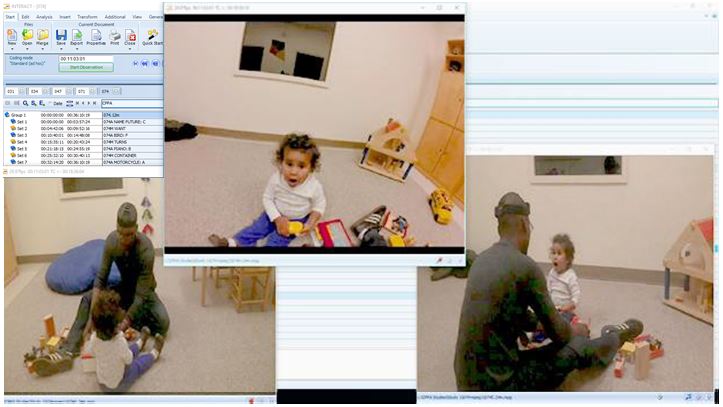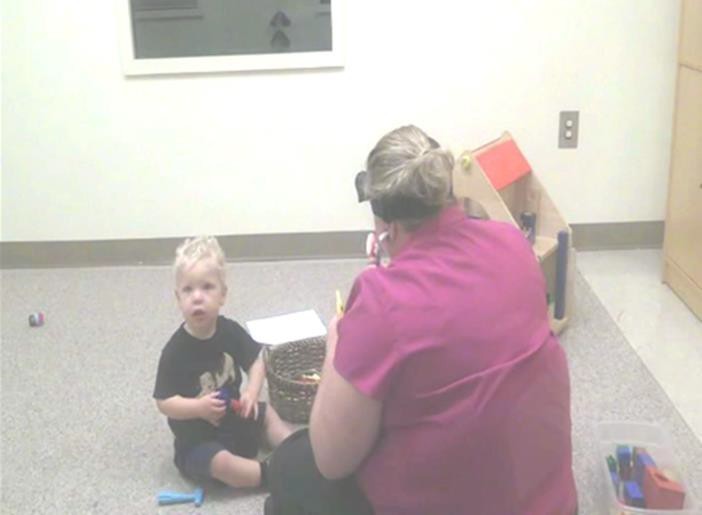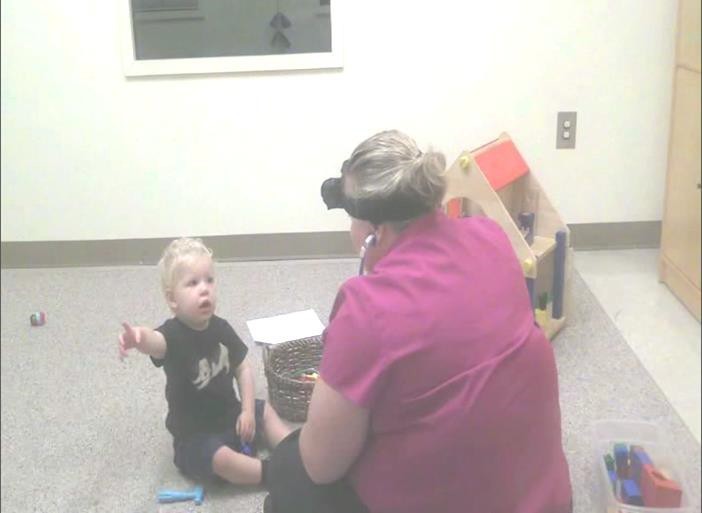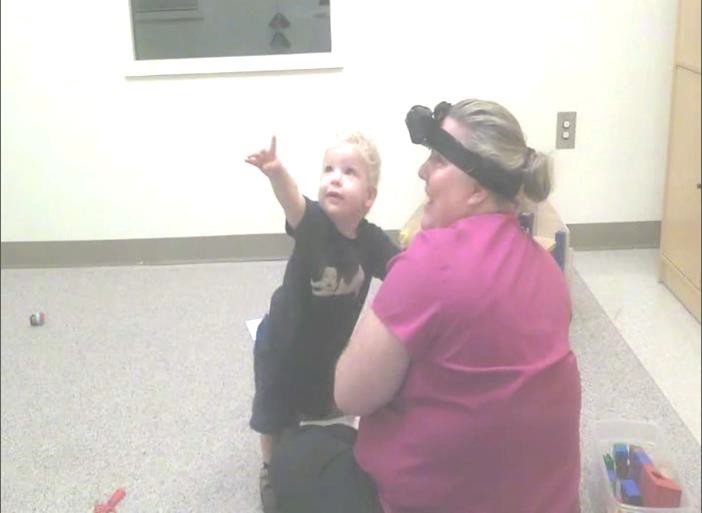How Autism Affects Sharing Sounds During Parent-Child Interactions
This study by Lauren B. Adamson, Roger Bakeman, Katharine Suma, and Diana L. Robins of Georgia State University provides insight into how toddlers respond to and share speech, music, and environmental sounds.

Figure 1. Coders using Mangold International’s INTERACT have three views: Video cameras located behind opposing one-way mirrors (left and right) and from a headcam on the parent’s forehead (center).
We are proud to share this study about Auditory Joint Engagement, presented at SRCD, and made with Mangold INTERACT.
Background
- Joint engagement—a child’s active sharing of objects and events with a partner—provides experiences essential for acquiring language and social understanding.
- Research has focused almost exclusively on the sharing of tangible objects.
- Yet sharing sounds, especially speech, is central to language development.
- Auditory joint engagement—the active sharing of sounds with a partner—was systematically studied.
- Our goals were to:
- Characterize how toddlers react to various sounds and how they share them with their parents.
- Discern how autism spectrum disorder (ASD) might affect reactions to sounds and auditory joint engagement. - Our hypotheses were:
- Toddlers typically alert to and share a variety of sounds.
- Toddlers with ASD are less prone to explore and share sounds, especially speech, than toddlers with DD or TD.
Method
- Participants: 24-month-old toddlers observed with their parents (n=128)—39 subsequently diagnosed with autism spectrum disorder (ASD) and 42 with non-ASD developmental delays (DD); 47 typically-developing (TD).
- Communication Play Protocol-Auditory (CPP-A): produced video samples of interaction in 4 scenes with 4 different sounds:
. Mu - Music (guitar or piano)
. An - Animal (bird or cat)
. Me - Mechanical (train or motorcycle)
- Sp - Speech (conversation with child’s name) - Phases: in each scene dyad interacts as a sound is played twice:
- Phase 1 - child-only (45 s): parent ignores the sound.
. Phase 2 - parent-child (60 s): parent tries to share the sound. - Child coding: video records (see Figure 1) were reliably coded:
- Alerts, orients, and attempts to share the sound (Phase1) and jointly engaged with the sound (Phase 2) coded yes|no.
- Hypersensitivity to and positive interest in sound rated 1–4.

Alerts to sound

Attempts to share sound

Jointly engaged with sound
Results
- Most toddlers in all three groups alerted to sounds in Phase 1; only a very few were hypersensitive to them.
- Overall toddlers with ASD showed less positive interest in sound (Ms = 1.8 < 2.1 < 2.3, for ASD, DD, and TD, respectively, Tukey test post hoc test p < .05).
- Toddlers with ASD were less likely than TD toddlers to alert to speech, orient to all but animal sounds, and attempt to share any of the sounds in the child-only phase, and be jointly engaged with any of the sounds in the parent-child phase (see Figure 2).
- Toddlers with ASD were less likely than DD toddlers to alert, orient, or attempt to share speech, and orient or be jointly engaged with mechanical sounds (see Figure 2).

Figure 2. ASD vs. TD and ASD vs. DD % Yes Compared (darker cells indicate significant differences, odds-ratio p <.05
Discussion
- This study provides an unprecedented view of how toddlers react to and share speech, music, and environmental sounds.
- We confirm that toddlers typically alert and orient to a wide range of sounds and often eagerly attempt to share them with parents and focus interactions on them.
- ASD, and to a lesser degree DD, affected toddler’s reactions to and sharing of sounds. Interestingly, toddlers with ASD alert as often to music and to environmental sounds even though they were less likely to explore and share them.
- As expected, ASD profoundly compromised reactions to speech, including alerting.
Auditory joint engagement difficulties, especially with speech, may hamper early language development. - Early intervention that seeks to enhance joint engagement might profit from encouraging the sharing of sounds with and without accompanying sights.
Acknowledgement: This study was funded by the National Institutes of Health, NICHD (R01 HD035612 and R01 HD039961).
Original poster: Click here for download >>>
